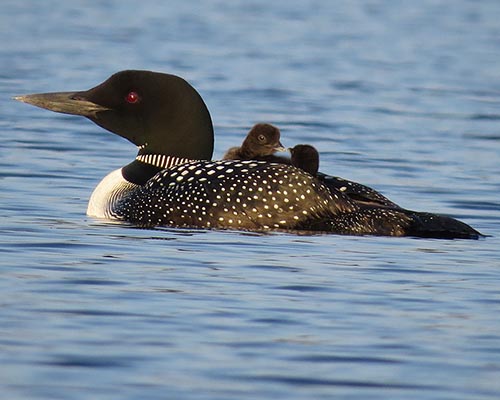Many studies show that global climate change is real. It is caused by rising levels of greenhouse gases such as carbon dioxide, and those levels are rising due to human activities, particularly the burning of fossil fuels. There is overwhelming agreement on these basic points among scientists. There is no legitimate debate on these facts.
There is also no legitimate debate as to whether climate change is having an effect on the environment around us. Sea levels are rising. Glaciers are melting. The oceans are both warming and acidifying. Tundra permafrost is thawing, accelerating the warming process by releasing copious quantities of the strong greenhouse gas methane. The North Pole is likely to be ice-free in summer within the next couple of decades. Since Arctic ice will no longer reflect solar radiation back into space, this will also accelerate the warming process.
Finally, there is no legitimate debate as to whether all this is having effects on organisms. A large number of studies show that plants and animals are shifting their ranges toward the poles and higher elevations because temperatures are increasing. Coral reefs worldwide are bleaching and dying because of ocean warming and acidification. Bark beetles, released from winter frosts, are spreading across the forests of western North America, causing massive die-offs of trees. Northward migrating southern bark beetles reached New York pine forests in 2014. And as stress on ecosystems builds, scientists estimate that more than a million species will be committed to extinction by 2050.
To many people, these sorts of facts seem too abstract. It is hard to wrap one’s mind around “more than a million species extinct” or the idea of an ice-free Arctic. Perhaps it is useful to focus on a narrower question: How will climate change affect the Adirondacks? As it happens, an entire book on that topic has been written (see the Further Reading list). In his foreword to the book, Bill McKibben writes, “These are the biggest changes the park has faced since the last Ice Age, and if we allow them to play out in full many of the glories of the Adirondacks will simply be gone.”
At this station, one species will symbolize the urgency of this warning. It is the common loon (Gavia immer) known in Canada and Europe as the great northern diver. This waterbird is an iconic symbol of the Adirondacks; it even appears in the logo of the Adirondack Council. Its call, distinctive and haunting, evokes the northern wilderness for many, and its unique plumage makes it immediately recognizable. The loon features in many Native American oral traditions, often in tales of “How the Loon Got Its Necklace.” It is the provincial bird of Ontario and appears on the “loonie,” a Canadian $1 coin.
Despite the love many have for the common loon, it has not fared well at the hands of humans. Loons eat only fish and other aquatic animals, making them highly susceptible to air and water pollution, which can accumulate in the aquatic food chain. Biologists sometimes call species like loons “indicator species,” meaning that because of their sensitivity, they are indicators of what the future holds for the ecosystem they occupy. Over the past decades, acid rain (see the Acid Rain station) and mercury pollution have eliminated the common loon from some lakes. Lead poisoning from fishing sinkers has eliminated it from others. The common loon is designated as Endangered in Vermont, Threatened in New Hampshire and Michigan and as a “Species of Special Concern” in Connecticut, Massachusetts and New York.
Sadly, the common loon is also being negatively impacted by climate change. The Audubon Society, a premier non-profit conservation organization that focuses on birds, conducted a study released in 2014 titled “Birds and Climate Change.” Using various scientific modeling techniques, their study predicts that the common loon will completely disappear from the Adirondacks by 2080. More than 300 other bird species are predicted to lose more than 50 percent of their present U.S. range; the bald eagle is projected to lose 73 percent of its current breeding range. If the common loon is an indicator species, what is it indicating that the future holds?

